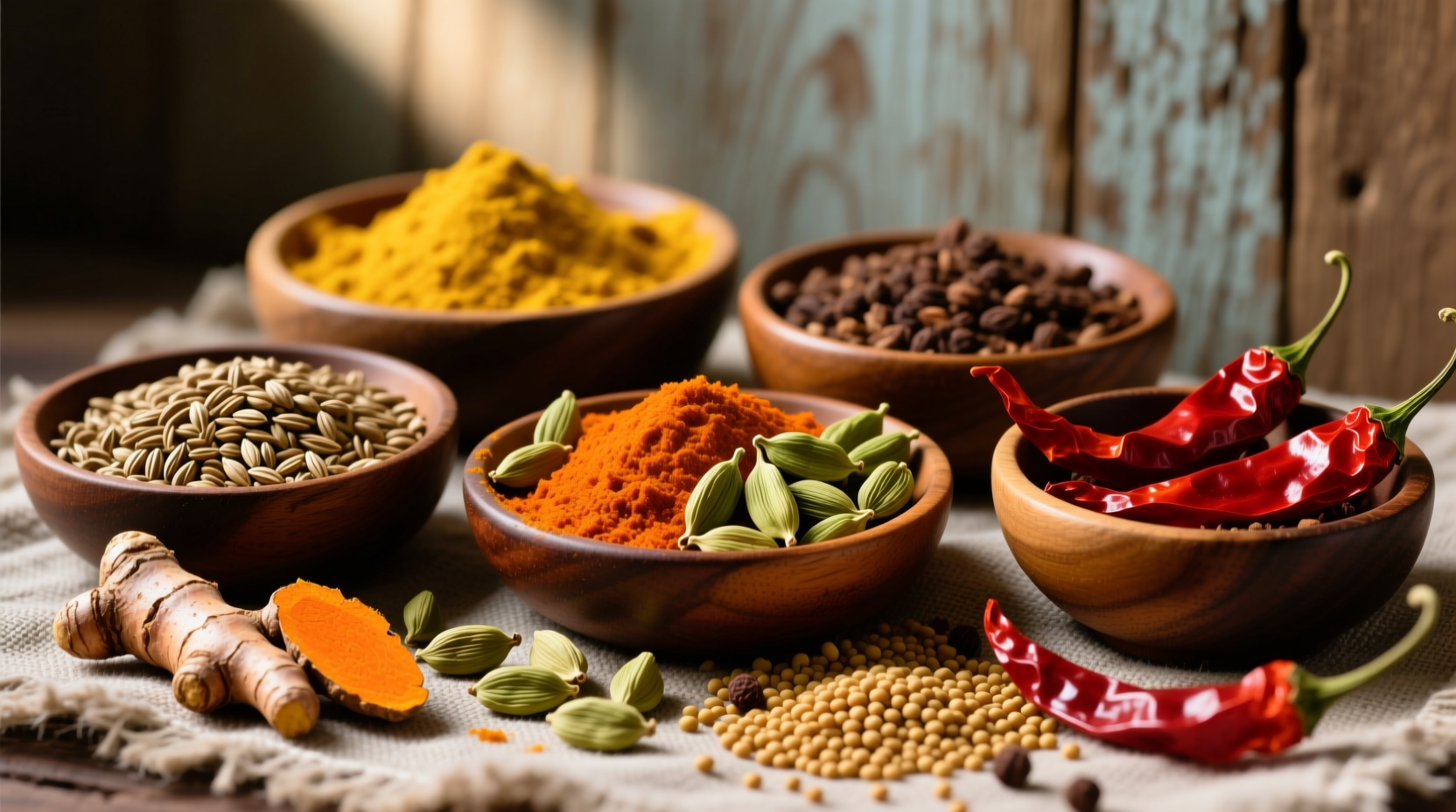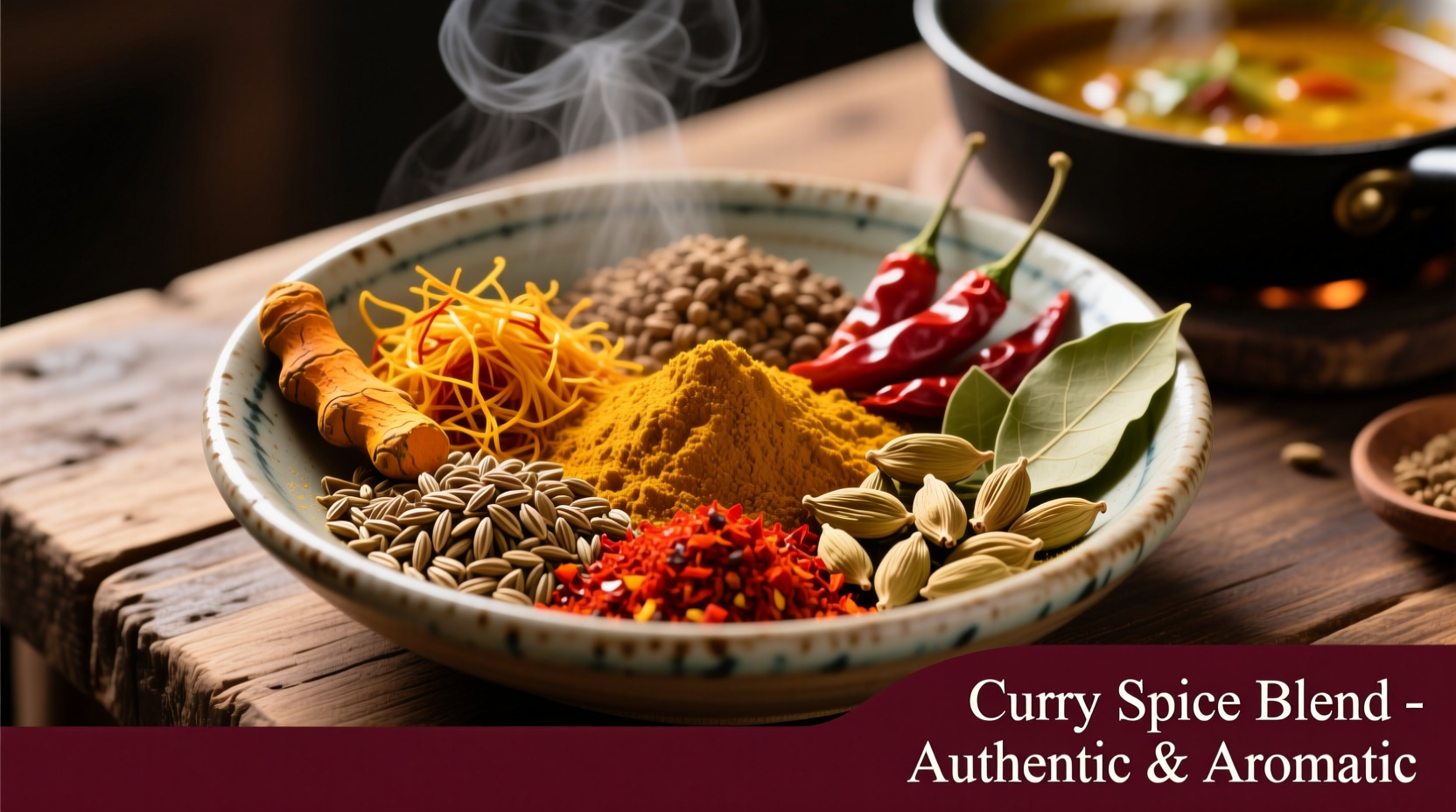Curry isn't a single spice but a diverse cooking tradition with regional variations. The core spices found in most curry blends include turmeric, coriander, cumin, fenugreek, and chili peppers. Additional spices like cardamom, cloves, cinnamon, and mustard seeds vary significantly by region and recipe.
Ever wondered why your homemade curry never quite matches the complex flavors you've tasted in restaurants? You're not alone. Many home cooks mistakenly believe “curry” refers to a specific spice blend, when in reality it represents a vast culinary tradition with countless regional variations. Understanding the essential spices and their proper application transforms ordinary dishes into authentic curry experiences.
Curry Demystified: It's Not a Single Spice Blend
The term “curry” originated from the Tamil word “kari,” meaning sauce or relish. British colonists in India adopted this term broadly for the diverse array of spiced dishes they encountered. This historical oversimplification created the persistent myth of a universal “curry powder.” In truth, authentic curry preparations use freshly ground spice combinations tailored to specific dishes and regions.
Professional chefs emphasize that understanding curry requires recognizing it as a cooking technique rather than a specific ingredient. “Curry is about layering flavors through careful spice sequencing,” explains Lisa Chang, whose field research across Asia documents traditional spice usage. “The magic happens when you toast whole spices to release essential oils before grinding them fresh for each dish.”
The Essential Curry Spice Foundation
While regional variations abound, certain spices form the backbone of most curry preparations. These foundational spices create the characteristic earthy, warm base that defines curry profiles:
- Turmeric – Provides the signature golden color and earthy bitterness (use sparingly as it can dominate)
- Coriander – Offers citrusy, floral notes that balance stronger spices
- Cumin – Delivers warm, nutty depth essential to most curry blends
- Fenugreek – Adds complex maple-like sweetness (use cautiously as it can taste bitter)
- Chili peppers – Provides heat level appropriate to regional preferences

Regional Variations: A Global Spice Journey
Curry traditions evolved differently across continents, creating distinct spice profiles. Understanding these regional differences helps you select appropriate spice combinations for authentic results.
| Region | Signature Spices | Distinctive Characteristics |
|---|---|---|
| South India | Mustard seeds, curry leaves, tamarind, asafoetida | Tangy, coconut-based with prominent sour notes |
| North India | Garam masala, ginger, garlic, dried fenugreek leaves | Richer, cream-based with complex layered spices |
| Thailand | Lemongrass, galangal, kaffir lime, shrimp paste | Fresh herb-forward with distinctive citrus notes |
| Japan | Fenugreek, poppy seeds,.optional fennel | Mild, slightly sweet with apple or honey additions |
| Caribbean | Allspice, Scotch bonnet peppers, thyme | Distinctive allspice note with tropical fruit accompaniments |
Historical Evolution of Curry Spices
Curry's spice journey reflects centuries of cultural exchange. The spice routes connecting Asia, Africa, and Europe transformed local cooking traditions:
- Pre-1500s: Indigenous South Asian cooking used local spices like black pepper, mustard seeds, and asafoetida
- 1500-1700s: Portuguese traders introduced chili peppers from the Americas, revolutionizing heat profiles
- 1800s: British colonists created “curry powder” as a shelf-stable approximation of complex fresh blends
- Early 1900s: Japanese adaptation incorporated Western influences, creating mild, sweet curry roux
- Present day: Global fusion cuisine blends traditional curry spices with local ingredients worldwide
Practical Spice Application Guide
Knowing which spices to use is only half the battle. Professional chefs emphasize technique as equally important:
When to Add Spices During Cooking
The timing of spice addition dramatically affects flavor development:
- Whole spices: Temper in hot oil first to release essential oils (30-60 seconds)
- Ground spices: Add after onions soften but before liquid ingredients
- Fragile spices (like curry leaves): Add later in cooking to preserve delicate flavors
- Finishing spices (garam masala): Stir in during last 5 minutes of cooking
Context-Specific Spice Ratios
Successful curry preparation depends on understanding context boundaries:
- For coconut milk-based curries: Increase coriander and reduce turmeric to prevent bitterness
- With tomato-based sauces: Add extra fenugreek to balance acidity
- When using pre-ground spices: Reduce quantities by 25% compared to fresh-ground recipes
- For extended cooking times: Add delicate spices like cardamom later to preserve flavor
Avoiding Common Curry Spice Mistakes
Even experienced cooks make these frequent errors that compromise authentic curry flavors:
- Overusing turmeric – Creates bitter, medicinal flavors (limit to 1-2% of total spice blend)
- Adding all spices simultaneously – Prevents proper flavor layering and oil extraction
- Using stale pre-ground spices – Loses 70% of volatile flavor compounds within 6 months
- Incorrect heat levels – Burning spices creates acrid, unpleasant notes
Food scientists at the University of California, Davis confirm that proper spice toasting increases flavor compound availability by up to 40% compared to using raw spices (foodscience.ucdavis.edu). Their research demonstrates that heating spices between 300-350°F optimally releases volatile aromatic compounds without degradation.
Creating Your Signature Curry Blend
Start with this professional chef-recommended base ratio, then adjust to your taste preferences:
- Coriander seeds: 30%
- Cumin seeds: 25%
- Turmeric: 20%
- Fenugreek: 10%
- Chili powder: 10%
- Cardamom: 5%
Toast whole spices in a dry skillet over medium heat until fragrant (about 2 minutes), then grind fresh. Store in an airtight container away from light for up to 2 weeks – though you'll likely use it before then! Remember that authentic curry making prioritizes freshness over convenience, with most traditional cooks preparing spice blends daily.
Frequently Asked Questions
Q: Is garam masala the same as curry powder?
A: No. Garam masala is a specific North Indian spice blend added at the end of cooking, while “curry powder” is a British creation designed as a shelf-stable approximation of various Indian spice combinations.
Q: Can I substitute curry powder for individual spices?
A: Yes, but with limitations. One tablespoon of curry powder generally equals 1 teaspoon each of turmeric, coriander, and cumin plus 1⁄2 teaspoon each of ginger and chili powder. However, fresh blends always yield superior flavor complexity.
Q: Why does my curry taste bitter?
A: Bitterness usually comes from too much turmeric, burned spices, or overcooked fenugreek. Balance by adding a touch of sweetness (1⁄2 teaspoon sugar) or acidity (1 teaspoon lemon juice) to counteract bitterness.
Q: How can I make my curry more authentic?
A: Use whole spices toasted and ground fresh for each dish, layer spices at different cooking stages, and incorporate region-specific ingredients like curry leaves for South Indian or galangal for Thai curries.
Q: Are curry leaves essential for authentic curry?
A: They're essential for South Indian and Sri Lankan curries but not used in North Indian or Thai preparations. Substitute with basil and lime zest if unavailable, though the distinctive aroma won't be identical.











 浙公网安备
33010002000092号
浙公网安备
33010002000092号 浙B2-20120091-4
浙B2-20120091-4